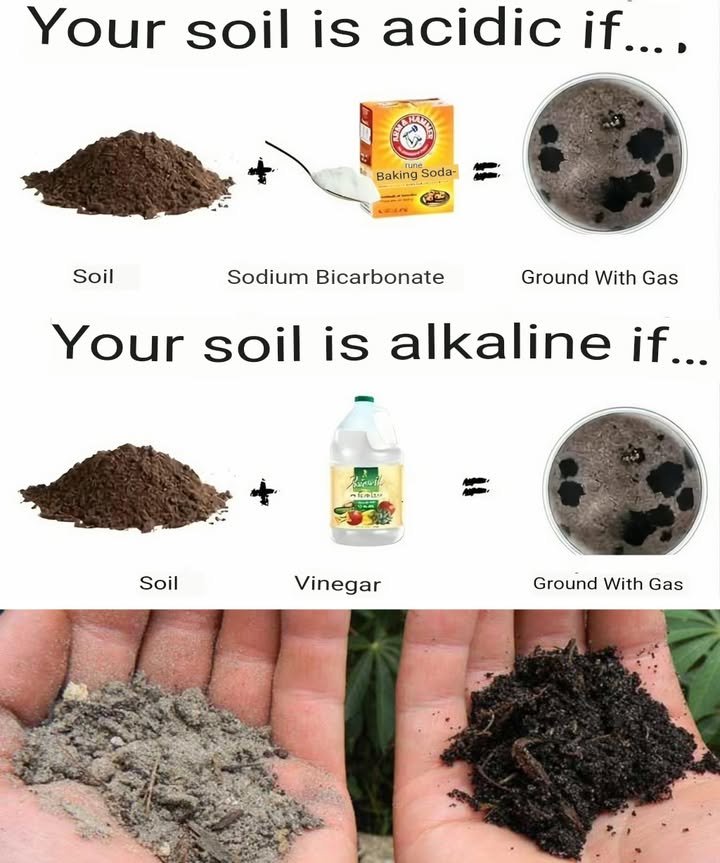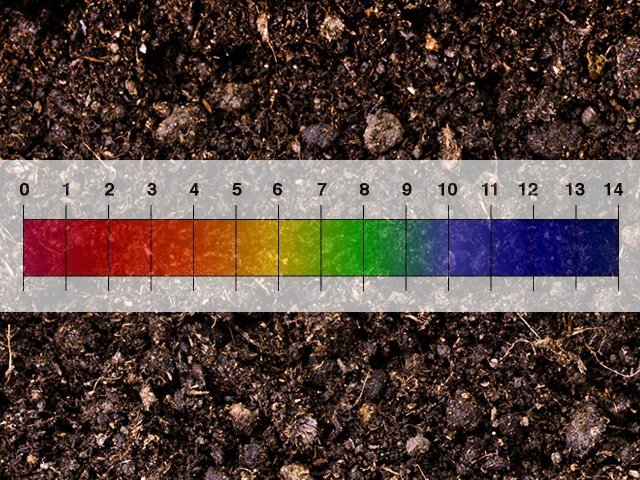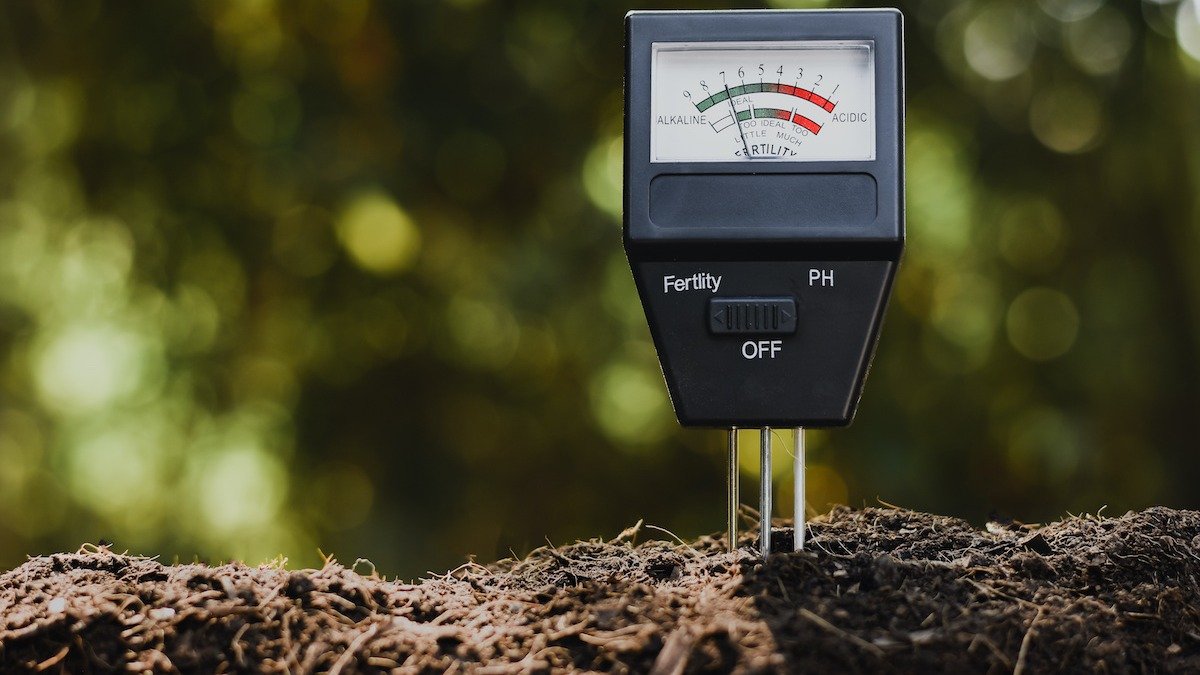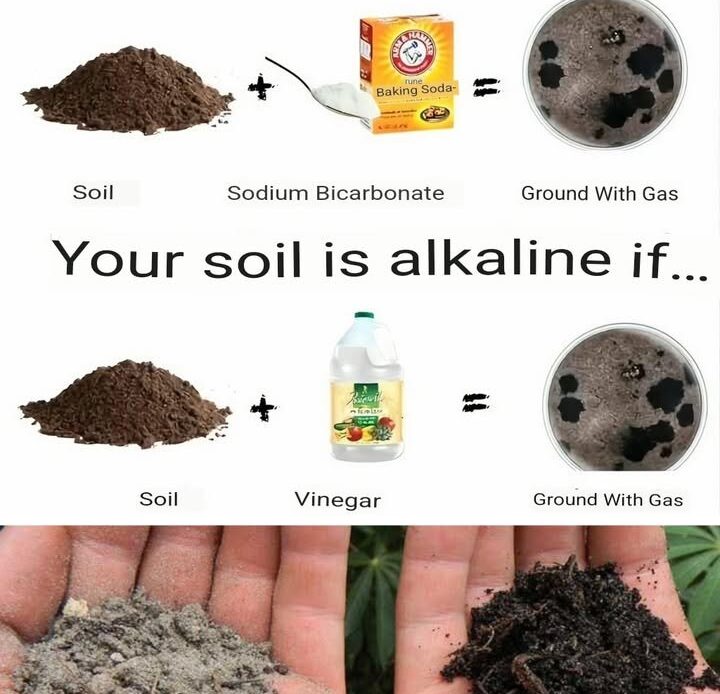Soil health is the foundation of a thriving garden, yet many gardeners overlook one crucial factor—soil pH. The pH level of your soil determines how well plants can absorb nutrients, affecting their overall growth, yield, and resistance to diseases. Fortunately, you don’t need expensive tools or lab tests to measure soil pH. With a few household ingredients, you can quickly determine whether your soil is acidic, neutral, or alkaline.
### **Why Soil pH Matters for Your Plants**

Soil pH measures how acidic or alkaline the soil is, on a scale of 0 to 14. A pH level of 7 is neutral, while anything below 7 is considered acidic, and anything above is alkaline. Most plants thrive in slightly acidic to neutral soil (pH 6.0–7.0), but certain plants prefer more extreme conditions.
– **Acidic soil (pH below 6.0):** Best for blueberries, azaleas, rhododendrons, and potatoes.
– **Neutral soil (pH 6.5–7.0):** Ideal for vegetables like tomatoes, cucumbers, and carrots.
– **Alkaline soil (pH above 7.5):** Preferred by lavender, asparagus, and some herbs.
If your soil’s pH is too high or too low, essential nutrients like nitrogen, phosphorus, and potassium become less available, leading to stunted growth, yellowing leaves, or poor fruit production.
### **Simple DIY Soil pH Test Using Household Ingredients**
Instead of purchasing a soil test kit, you can use common kitchen items like baking soda and vinegar to get a rough estimate of your soil’s pH. This method won’t give you an exact number, but it provides a general idea of whether your soil is acidic or alkaline.
#### **Materials Needed:**
✔ A small trowel for collecting soil samples
✔ Two small containers
✔ Baking soda
✔ White vinegar
✔ Distilled water
#### **Step-by-Step Instructions:**

1. **Collect Soil Samples**
Use a trowel to gather soil from different parts of your garden. Dig a few inches below the surface to get a representative sample, avoiding debris like leaves or rocks. Mix the samples in a bowl to get an average soil composition.
1. **Divide the Soil into Two Containers**
Place equal amounts of soil into two separate containers.
1. **Test for Acidity with Baking Soda**
– Add a few spoonfuls of distilled water to one container until the soil becomes muddy.
– Sprinkle a teaspoon of baking soda over the soil.
– If the mixture starts bubbling or fizzing, your soil is likely acidic (pH below 6.0).
1. **Test for Alkalinity with Vinegar**
– Pour a small amount of white vinegar into the second container.
– If you see bubbling or foaming, your soil is alkaline (pH above 7.5).
1. **Analyze the Results**
– If both tests result in no reaction, your soil is likely neutral (pH around 6.5–7.0).
– If the baking soda test fizzles but the vinegar test does not, your soil is acidic.
– If the vinegar test reacts but the baking soda test does not, your soil is alkaline.
### **How to Adjust Your Soil pH Naturally**

If your DIY test reveals that your soil is too acidic or too alkaline, you can adjust it naturally with organic amendments.
**To Raise Soil pH (Reduce Acidity):**
✔ Add lime (calcium carbonate) or wood ash to neutralize acidic soil.
✔ Use compost rich in eggshells or crushed limestone.
✔ Avoid excessive use of fertilizers high in ammonium sulfate.
**To Lower Soil pH (Reduce Alkalinity):**
✔ Incorporate organic matter like peat moss, compost, or pine needles.
✔ Apply elemental sulfur or coffee grounds to acidify the soil gradually.
✔ Use organic fertilizers instead of synthetic ones, which can raise alkalinity.
### **Signs That Your Soil pH May Be Off**
If you didn’t test your soil but notice any of the following symptoms, you might have an imbalance:
– **Acidic Soil Problems:** Yellowing leaves, slow plant growth, poor root development.
– **Alkaline Soil Problems:** Leaf chlorosis (yellowing between leaf veins), nutrient deficiencies, weak flowering.
### **Final Thoughts: Why Every Gardener Should Know Their Soil pH**

Understanding your soil’s pH is one of the simplest yet most important steps to growing healthy plants. By performing this easy DIY test, you can make informed decisions about soil amendments and plant choices. Whether you’re growing vegetables, flowers, or fruit trees, maintaining the right pH balance will help maximize plant health, nutrient uptake, and overall garden success.
If you want a more precise reading, consider using a commercial soil pH test kit or sending a sample to a professional lab. But for quick at-home results, this vinegar and baking soda test is a fast, practical, and budget-friendly solution
Happy gardening 🌱
